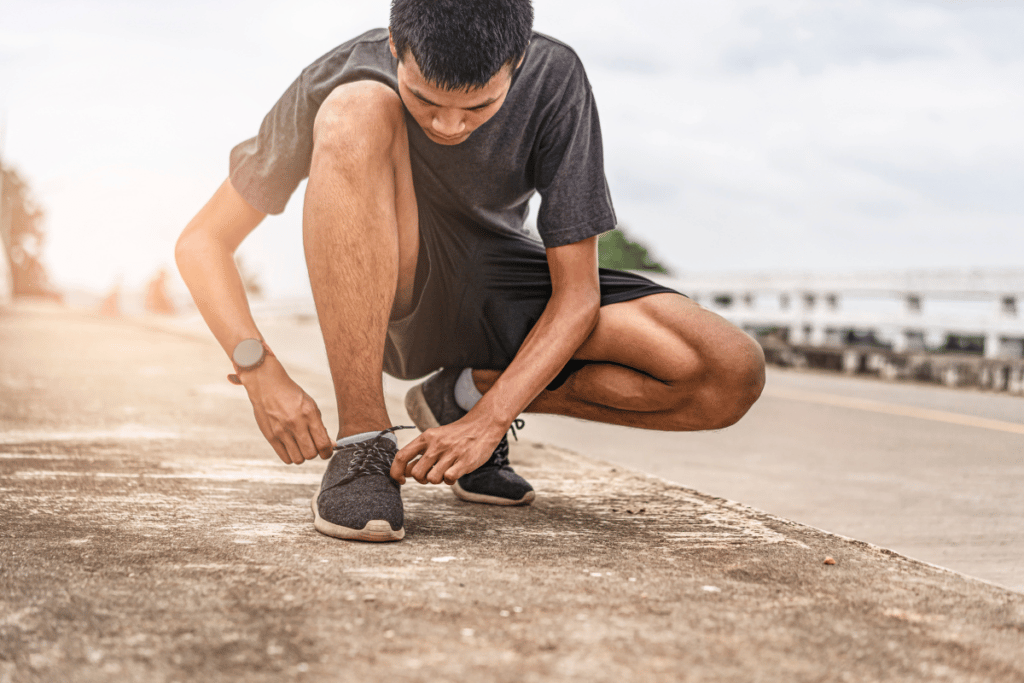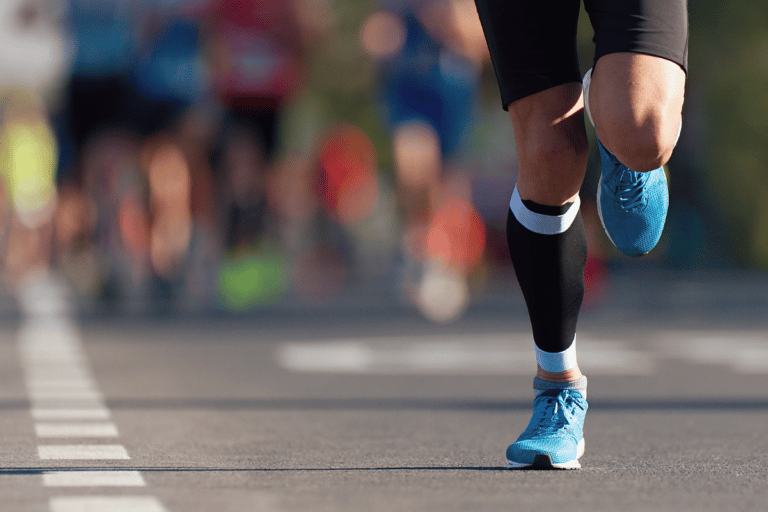What is a Good Time for Running a Mile in High School?
Watching Olympic athletes is inspiring, but most runners have not yet reached that level of competition. Just like with anything, running takes years of work and dedication to improving times bit by bit. If you find yourself at an earlier stage of running development, you may still want a metric by which to measure the quality of your performance. So you may wonder, what is a good time for running a mile in high school?
Determining what qualifies as a good high school mile time depends on several factors, including the age and sex of the runner, level of experience, and other variable conditions. In general, a competitive time for a male in a high school 1600-meter event will clock in around 5:15, while a female will clock in around 6:45.
Look over some of the data below to learn more about high school mile times.
What is the fastest-ever 1 mile run in high school?
The fastest 1-mile race ever run by a high school student clocks in at 3:57:98. This was set in May of 2022, when Gary Martin, a senior from Warminster, Pennsylvania, broke a high school mile record that had stood since 1965 by running a sub-four-minute mile.
Running a mile in under four minutes is a noteworthy athletic accomplishment that calls for a mix of speed, stamina, and training. It is challenging to complete since it calls for excellent physical condition and a strong dedication to training.
Roger Bannister ran the first sub-four-minute mile on May 6th, 1954, and it has remained a difficult barrier to overcome in the sport today. While most modern professional runners run below the 4-minute mark, it is quite an achievement for a high school athlete!
Average mile times by age in high school

The following times are rough suggested averages for high school-aged boys and girls based on available online data. If you are in one of these age groups, check out the suggested times below to compare your PR with national averages.
| Age | Competitive Average (male) | Advanced Average (male) | Elite Average (male) | Competitive Average (female) | Advanced Average (female) | Elite Average (female) |
| 14 years | 6:45 or lower | 6:00 | Below 6:00 | 7:45 | 7:15 | 7:00 |
| 15 years | 6:15 or lower | 5:30 | Below 5:30 | 7:15 | 7:00 | Below 7:00 |
| 16 years | 6:00 or lower | 5:15 | Below 5:15 | 7:00 | 6:45 | Below 6:45 |
| 17 years | 5:45 or lower | 5:00 | Below 5:00 | 6:45 | 6:30 | 6:15 |
| 18 years | Below 5:00 | 4:00 | 6:00 | Under 5:00 |
When runners reach the age of 18, the suggested times remain pretty much the same, give or take a few seconds. Elite runners in the 18-year-old age group will typically compete for college scholarships and international recognition.
Obviously, it isn’t possible to poll mile times for every person in each age group to determine a true average. Still, these rough figures may give you an idea of what kind of times you should not be aiming for as a competitive high school runner.
What can affect running time?
Several factors, such as physical attributes and environmental conditions, can affect your running time, and this is true whether you are an experienced runner or not. Working around these factors, regardless if they’re beyond your control, can be critical in improving your running time.
The following factors may contribute to how fast or slow your times are when running a mile. Glance over the list below to see if these factors might impact your runs.
- Current Level of Fitness
- Training Regimen
- Age
- Gender
- Body Type
- Nutrition
- Weather
- Terrain
- Pre Existing Injuries
- Mentality
- Motivation
Any of these factors may contribute to the times you produce on a given run. Some of these factors are more circumstantial, while others are chronic issues that need to be addressed. Let’s look at a few ways to deal with these factors to improve your mile time.
How to improve your mile time

There are a number of strategies for improving your mile time.
Below is a short list of techniques you might want to consider if you plan to shave some seconds off of your current PR.
- Train consistently
- Incorporate strength training
- Improve your form
- Stay hydrated and well-fed
- Get enough rest
Train consistently
To improve your mile time, it’s important to train consistently and follow a structured plan. This might involve running a specific amount of mileage regularly, doing interval running, hill sprints, and tempo runs to build your endurance and speed.
Incorporate strength training
In addition to running, it can be beneficial to incorporate strength training into your training routine. Strength training, such as weightlifting or bodyweight exercises, can help improve your power and speed. They may also reduce your risk of injury by increasing muscular stability.
Improve your form
Paying attention to your form while running can help you run more efficiently and improve your mile time. This might involve focusing on your posture, arm swing, and foot strike. All of these things can be improved by incorporating regular exercises into your training regime to focus on technique and running form.
Hydration & Nutrition

Proper hydration and nutrition are important for maintaining energy levels, which can maximize your performance results. Make sure to drink plenty of water and fuel up your body with a balanced diet that includes carbohydrates, proteins, and healthy fats. Consult a medical hydration and nutrition guide from a reliable source to improve your mile time.
Get Sufficient rest
It’s important to allow your body time to recover between workouts. Make sure to get enough sleep and rest days as needed to prevent overtraining. Without rest, you can overwork your body, leading to sluggish performances.






